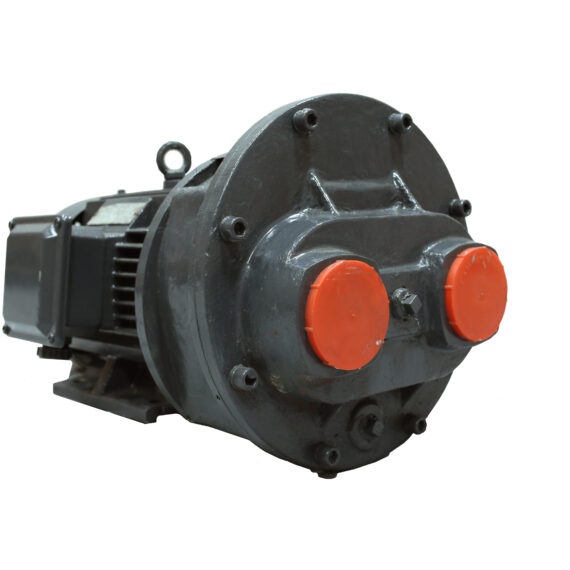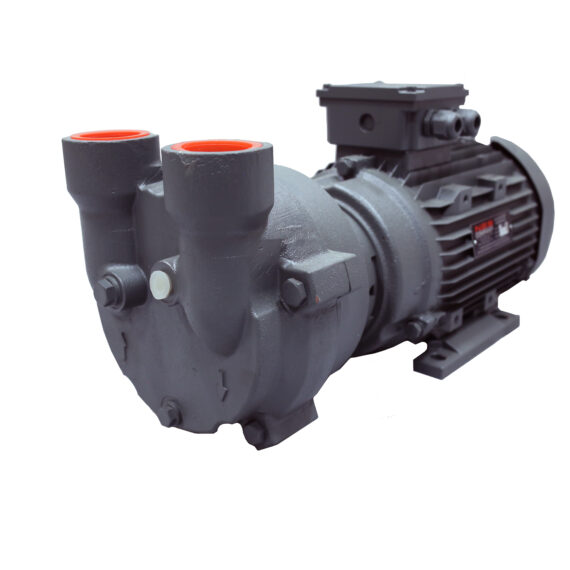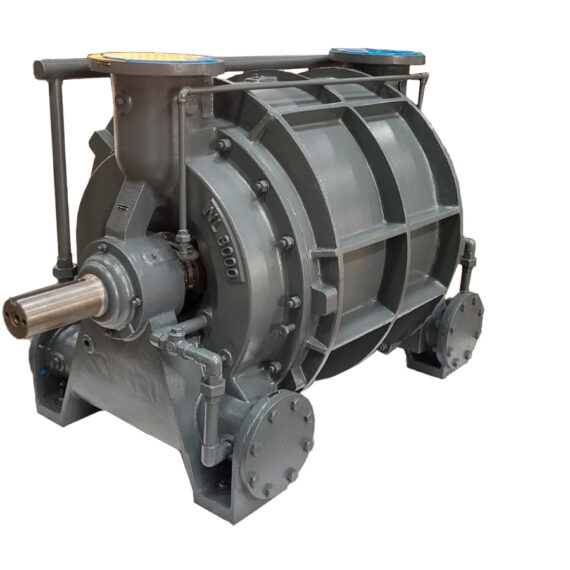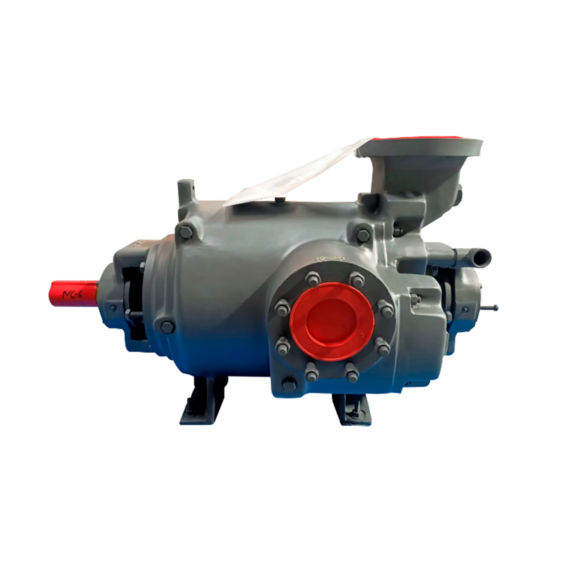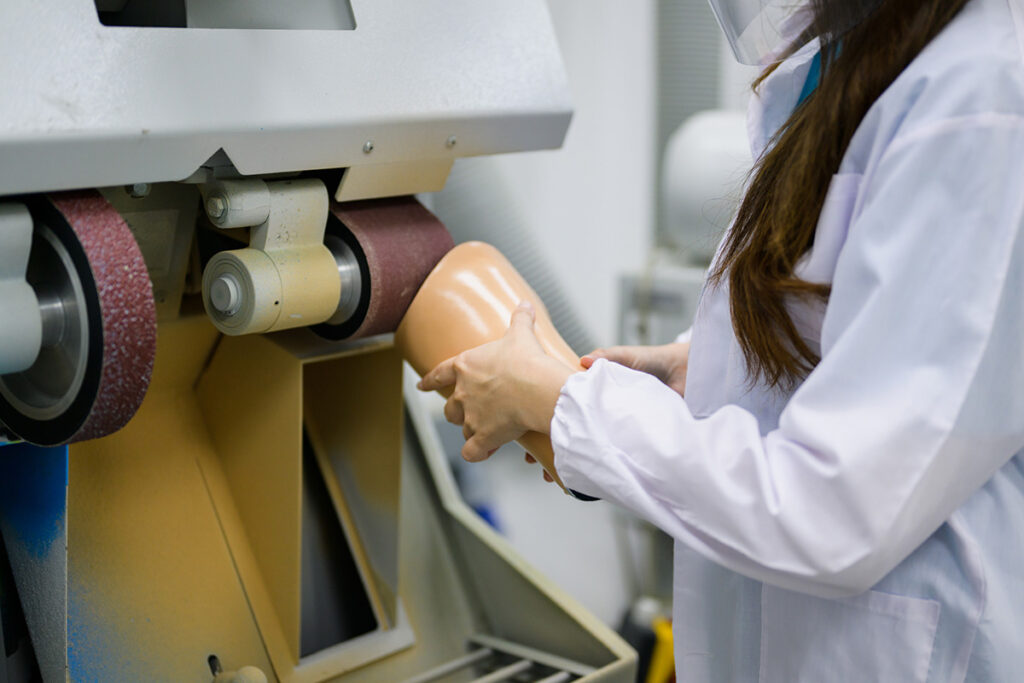
Uses Of Liquid Ring Pumps In Medical Devices/Prosthetics
The evolution of prosthetic manufacturing has revolutionized the design of custom-made devices, ensuring enhanced comfort and functionality tailored to each individual. Unlike earlier generic prosthetics, modern prosthetics and orthotics, including splints and braces, are customized through vacuum forming.
Splints and braces are handmade using plaster casts on the affected area. These positive casts are placed on a vacuum forming table, where materials like polypropylene, acrylonitrile-butadiene-styrene (ABS), or lightweight and durable carbon fiber are heated and pressed onto the mold. Vacuum application refines the finer details of the mold, resulting in unique, precisely prescribed prosthetics or orthotics.
In the medical field, the use of subatmospheric conditions has propelled advancements in various devices. A prime example is the cyclotron, a particle accelerator crucial for researching and producing radiopharmaceuticals. Operating under near-complete vacuum conditions, cyclotrons accelerate charged particles at supersonic speeds, producing radioactive elements for pharmaceutical use or as a non-surgical tumor therapy. Vacuum technology extends to magnetic resonance imaging (MRI), where it is employed in both coil production and the cooling process.
In MRI cooling, superconductive coils are subjected to electrical current, becoming superconductive at approximately 9 K, reducing resistance, and strengthening the magnetic field. Achieving this temperature involves creating near-complete vacuum conditions and cooling the coils with liquid helium. This process aligns the body’s protons in the magnetic field, allowing the release of radio waves when a radio frequency is applied. Receiver coils sense these waves, translating the information to a computer for comprehensive imaging. The integration of vacuum technology enhances precision and efficiency in the production and operation of medical devices, particularly in the realm of prosthetics and MRI systems.
View our Products
Applications of Liquid Ring Vacuum Pumps
These diverse applications share a common need for consistent and deep vacuum conditions, ranging from the relatively moderate requirements of vacuum thermoforming to the near-complete vacuum demands of the cyclotron and MRI cooling systems. The liquid ring vacuum pump emerges as a versatile and effective solution across these applications.
In vacuum thermoforming, where robust suction is crucial for eliminating air between heated material and the positive cast, the liquid ring vacuum pump proves its suitability. Constructed as a single-stage pump, it can attain up to 26” Hg, ensuring ample strength for the task. The pump’s durable design guarantees a long lifespan with minimal maintenance, facilitated by the continuous, undisturbed suction resulting from the impeller’s simultaneous spinning through intake and outlet ports.
For the cyclotron, which relies on deep vacuum conditions to extend the mean free path of accelerated charged particles, the liquid ring vacuum pump aligns perfectly with the stringent requirements. Even in the presence of sludge or liquid slugs, the pump maintains optimal performance, crucial in environments where any lapse in suction could compromise the entire process. A dual-stage liquid ring pump can reach up to 28” Hg independently, and the robust design ensures ease of maintenance and repair, making it a cost-effective and reliable choice for cyclotron applications.
Similarly, in MRI cooling, where maintaining near-complete vacuum conditions is imperative to prevent atmospheric air ingress and maintain superconductivity, the liquid ring vacuum pump excels. With a dual-stage pump, it achieves the necessary vacuum level, providing constant suction to safeguard against air infiltration. The pump’s adaptability in manipulating mass flow rate during early construction stages ensures alignment with required rates. Using a low-freezing-point liquid as a sealing liquid prevents helium vapor from freezing, enabling a smooth compression process. This isothermal compression process minimizes energy requirements from the condenser, enhancing overall efficiency in condensing the vapor back into liquid helium.
In summary, the liquid ring vacuum pump emerges as a reliable and adaptable solution, effectively meeting the demanding vacuum conditions across a spectrum of applications, from prosthetic manufacturing to advanced medical devices like cyclotrons and MRI cooling systems.

